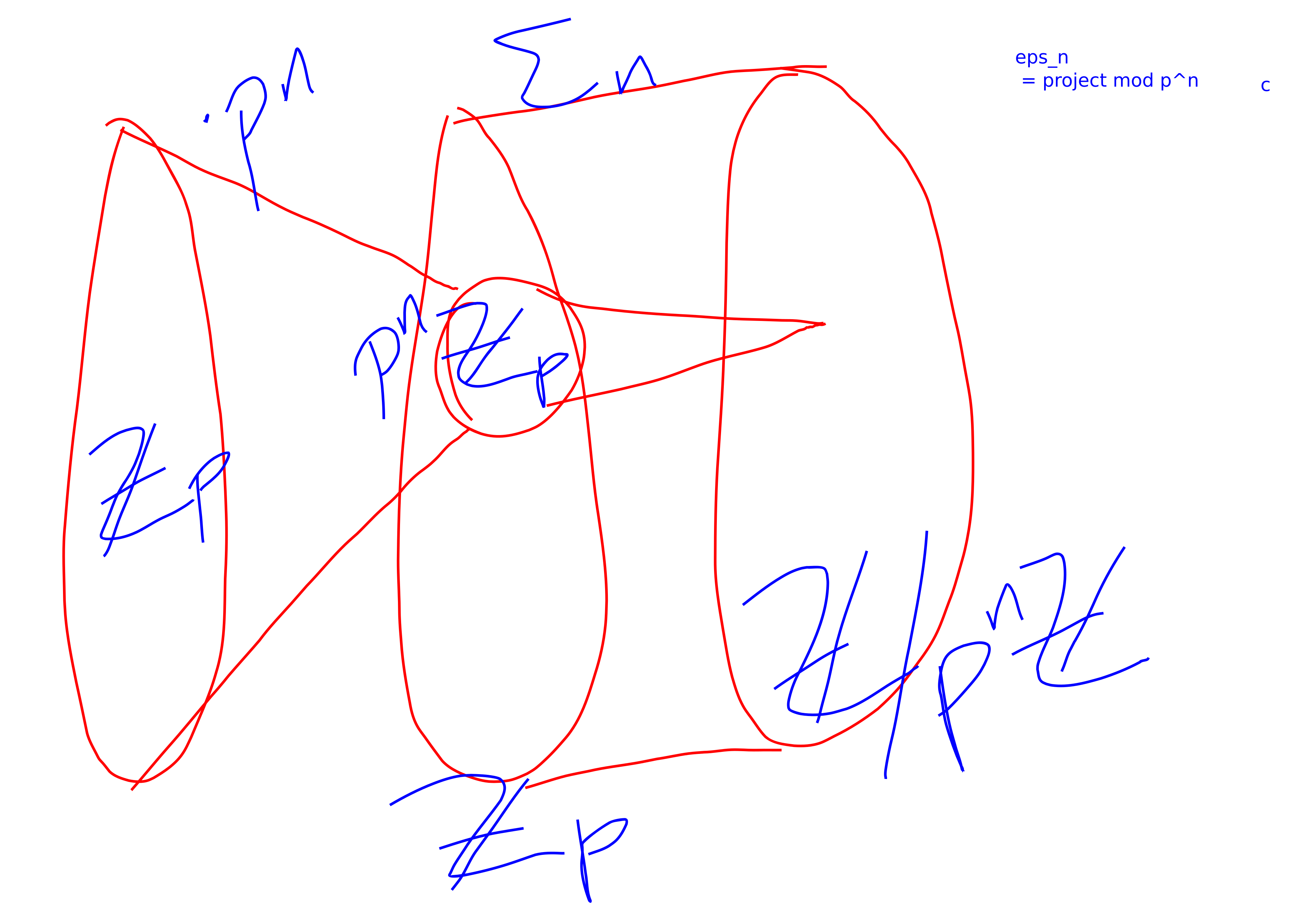In chapter 2 we define the p-adics and develop some stuff about them.
We use \(\mathbb{Z}_p, \mathbb{Q}_p\) to denote the q-adic integers and q-adic rationals repsectively. We use \(\mathbb{Z}/p\mathbb{Z}\) to denote the cyclic group with \(p\) elements. Sorry about that!
Question: What metrics, besides the standard absolute value, can you put on \(\mathbb{Q}\)?
In particular, this question is probably modulo the topology induced by the metric. That is, if two metrics induce the same topology then they aren’t “super different”.
For instance, \(|x|\) and \(|x|^{1/2}\) (or \(|x|^{\alpha}\) for any \(\alpha\in (0,1]\)) where \(|\cdot|\) denotes the standard absolute value, induce the same topology on \(\mathbb{R}\).
Proposition. There are only two types of norms that you can put on \(\mathbb{Q}\): the standard absolute value, and the \(p\)-adic norm.
Proof.
First, suppose there is some \(n\in \mathbb{N}\) such that \(||n|| > 1\). In this case we will show that the norm is equivalent to the absolute value norm. Let \(n_0\) be the smallest \(n\in \mathbb{N}\) with norm larger than \(1\). Take \(\alpha\in \mathbb{R}_{>0}\) such that \(||n_0|| = n_0^{\alpha}\). Write any number \(n\) in base \(n_0\). By the triangle inequality we derive that there exists a constant \(C\) such that \[||n||\le C n^{\alpha}.\] Then you can boost this by replacing \(n\) with \(n^2\) whereby we obtain \[||n||\le \sqrt{C} n^{\alpha}.\] Continuing we can make \(C\to 1\). You can by similar means also show \(||n||\ge n^{\alpha}\). And then you can extend to all of \(\mathbb{Q}\).
Then consider the case that \(||n||\le 1\) for all \(n\in \mathbb{N}\).
Then you find that \(||n||\) must be of the form \(||n|| = \rho^{\nu_p(n)}\) for some \(\rho\in(0,1)\) and \(p\) prime.
Question: Why do we care about the p-adic numbers?
They can sometimes help you find/count roots of polynomials in \(\mathbb{Z}[x_1,x_2,\ldots, x_n]\), which is one of the main goals of NT.
Proposition. Suppose you have some polynomials with a common zero in \(\mathbb{Z}_p^{m}\) This is equivalent to the polynomials having a common zero in \(\mathbb{Z}/p^{n}\mathbb{Z}\) for all \(n>1\).
Proof.
“projective limit”
think of a projective limit as just saying “if you can extend something from \(\mathbb{Z}/p^{n}\mathbb{Z}\) to \(\mathbb{Z}/p^{n+1}\mathbb{Z}\) then you can extend it all the way to \(\mathbb{Z}_p\)”.
You ususally need some kind of “plays nice under projections” property / some diagram commutes for this to be well-defined.
Proposition. Some kind of crazy way to lift solutions all the way using Taylor Series.
Basically, if you have \(\nu_p(f(x))\ge n\) and \(\nu_p(f'(x))<n/2-1\) then you can lift this to a solution in \(\mathbb{Z}_p\)
This even works in some multivariable setting, and you only need one partial derivative to have this property.
Corollary. Every simple zero of the reduction modulo \(p\) lifts to a zero in \(\mathbb{Z}_p\).
Corollary. something about lifting solutions to quadratic forms.
Proposition. \(x\in \mathbb{Z}_p\) invertible iff \(p\not\mid x\).
\(\mathbb{Z}_p\) is an integral domain.
Let \(U\) denote the units. Then \(\mathbb{Z}_p \cong \mathbb{Z}\times U\).
Proof. invertability: taylor series for \(\frac{1}{1-pz}\).
Proposition.
I think this diagram roughly means \[\mathbb{Z}_p / p^{n} \mathbb{Z}_p \cong \mathbb{Z}/p^{n}\mathbb{Z}.\]

DANGER EXTREME INTENSITY
Now we say some stuff about the units in \(\mathbb{Z}_p\).
Ok, now here is the theorem that I spent like forever trying to understand. It was good, I had to come up with special case that I could understand and then slowly was able to figure out a proof.
Let \(U_n = 1+p^{n}\mathbb{Z}_p\).
Theorem. \[U = V\times U_1\] where \(V = \left\{ x\in U\; : \;x^{p-1}=1 \right\}\cong \mathbb{F}_p^{\times}\).
Proof.

Claim 1: \[V_n = \left\{ x^{p-1}\; : \;x\in U/U_n \right\}\subseteq U_1/U_n.\] Proof: if you consider the reduction of \(x^{p-1}\) modulo \(p\) it is \(1\).
Claim 2: \[U/U_n = U_1/U_n \oplus V_n.\] Proof: Any \(x\in U/U_n\) can be expressed as \[x = x^{(p-1)s}x^{p^{n-1}r}\] because \(p^{n-1}\perp (p-1)\).
Observe that \((x^{p^{n-1}})^{p-1} = 1\) because \(|U/U_n| = (p-1)p^{n-1}\). Thus, \(x^{p^{n-1}r} \in V_n\). Also, \(x^{p-1}\) we showed in claim 1 is in \(U_1/U_n\). Thus we have the direct sum decomposition.
Then we “projective limit”-anate \(V_n\) to get \(V\).
And \(\lim U/U_n = U.\)
Proposition. Let \(p\neq 2\). \(U_1\cong \mathbb{Z}_p\)
Proof. Consider \((1+p)^{p^{i}}\). This is a generator for \(U_1/U_n\).
some diagram commutes.
Hence we can projective limit lift lift lift.
Corollary. Let \(p\neq 2\). Then \(\mathbb{Q}_p^{\times} \cong \mathbb{Z}\times \mathbb{Z}_p \times \mathbb{Z}/(p-1)\mathbb{Z}\).
edit
Finally saw a good definition of projective limit! Given a set of rings \(A_1,A_2,A_3,\ldots\) and morphisms \(\phi_i: A_i \to A_{i-1}\) the projective limit is literally just defined to be the following subring of \(\prod_{i=1}^{\infty} A_i\):
\[\left\{ x_1,x_2,\ldots, \in \prod_{i=1}^{\infty} A_i\; : \;\phi(x_i) = x_{i-1} i\;\;\forall i \right\}.\]